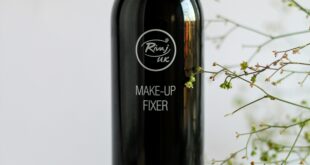What informs a beauty brand’s product development pipeline? The answers, it turns out, are myriad.
In the second module of Beauty Business Essentials, the digital learning course created by WWD, Yellowbrick and Fashion Institute of Technology, a slew of industry leaders said that while product development may be one of beauty’s more fun aspects, it also requires the most foresight.
Click here to learn more about this course.
“The conceptual component of developing is fundamentally the heart and soul of what is going to make the brand, the franchise or the product really stand out,” said Anne Carullo, an industry consultant who previously worked as the senior vice president of global product development for Estée Lauder and Tom Ford Beauty.
The logistical challenges of making beauty products may be numerous, but Karen Chambers, executive vice president of Iman Cosmetics, likened it to a puzzle. “It’s like having this challenge and then going, ‘OK, how do I fit these things together,’” she said. “The really fun stuff is when I worked years ago with a makeup artist and we had the best time, sitting around with the naming…the overall process of developing products and putting your own creativity into and then seeing that product on the shelf is so exciting.”
Considerations range from logistical to legal, too. “The difference between a beauty product and a drug is simply the fact that the FDA regulates what’s considered a drug, products like sunscreens and acne products,” said Ron Robinson, cosmetic chemist and founder of BeautyStat. “Those are regulated by the FDA, so the skin care company or beauty company has to use certain ingredients that are approved by the FDA at certain levels.”
For some founders, product development is a natural extension of the needs that jumpstarted their brands. “New brands are launching every single day and it really becomes, at the end of the day, that this person’s vitamin C serum is not that different from that person’s. So your brand’s story, the narrative behind your brand and the packaging all lay a really vital role,” said Emily Parr, cofounder of skin care brand HoliFrog.
“The formulas were the easy part for me because I knew ingredients so well, and I’m so hyper conscious about every single ingredient that I’m putting on my skin,” she said.
To that end, Elizabeth Forsyth, chief executive officer of Sheencolor USA, a cosmetic manufacturer, said that “it’s really critical to a brand to pick their supplier based on their own personal needs for that brand. If you’re an indie brand, you want to find a supplier that can work with you on the development of the entire package, and probably including the secondary package, such as your folding carton.”
For more from WWD.com, see:
Urban Outfitters Stock Hit as Supply Chain Woes Slow Store Comps
Launch Pad: Beauty Addresses Anxiety
Eye Candy: The Beauty Inc Awards Breakfast
https://wwd.com/beauty-industry-news/beauty-features/new-beauty-brands-approach-innovation-1235021183/
 fashion rec fashion wanted
fashion rec fashion wanted

